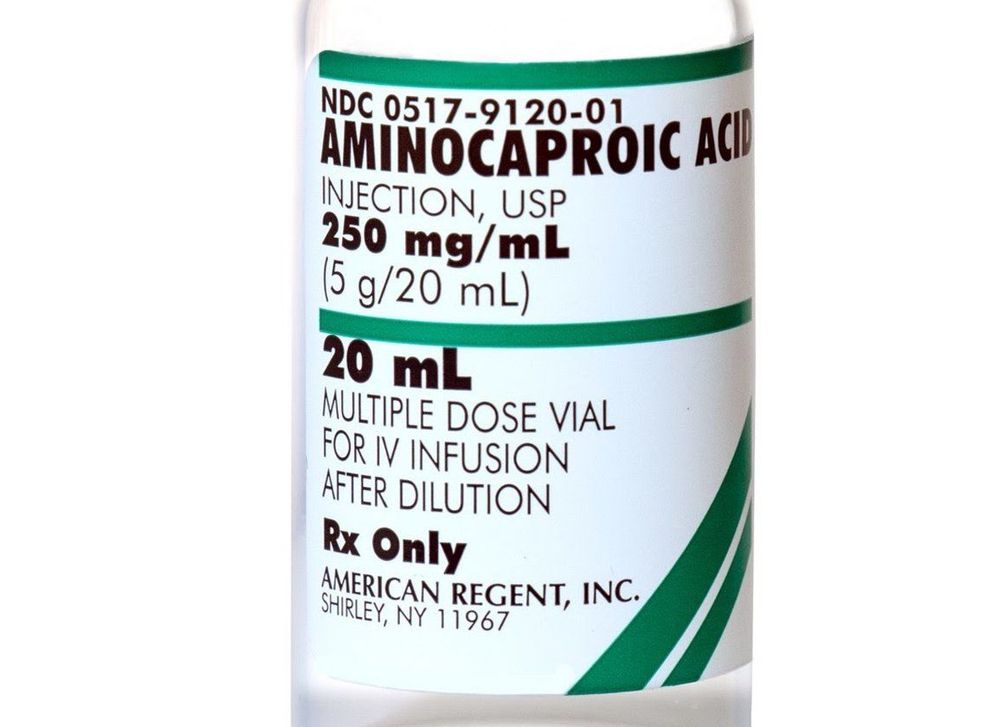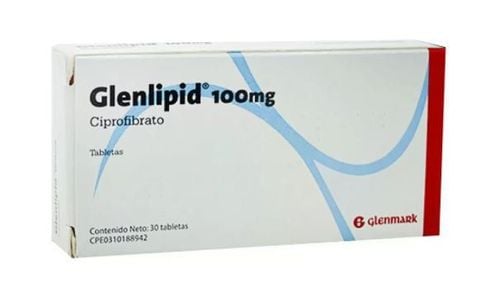This is an automatically translated article.
Uses of aminocaproic drugs is to treat severe hemorrhagic disease associated with hemostatic disorders. Aminocaproic drugs have ways of use, doses and side effects that patients need to be aware of in order to achieve the highest effectiveness.
1. Aminocaproic drug use
Aminocaproic is a synthetic monoamine carboxylic acid with the ability to digest fibrin or in other words help stop bleeding. The main mechanism of action of the drug is inhibition of plasminogen and plasmin. Since then, in clinical practice, the drug is capable of inhibiting the bleeding process, helping to stop bleeding during surgery, especially in cases of patients with bleeding or severe liver disease.
Indications to use Aminocaproic drug in the following cases:
Bleeding causes increased fibrinolysis: Usually it will be systemic fibrinolysis and fibrinolysis. In some special cases, the patient also needs blood transfusion and other emergency methods. In particular, increased cases of systemic fibrinolysis usually occur after cardiac surgery, liver vascular anastomosis, or patients with vascular system disorders such as aplastic thrombocytopenia, placental abruption, liver , prostate carcinoma , stomach cancer , cervical cancer . For fibrinolysis, it is often manifested by non-surgical hematuria, polycystic disease, and cancer of the genital tract. In addition, for patients with hematological diseases such as acute myelogenous leukemia, aminocaproic drugs are also used in combination with heparin therapy. Hemorrhage of the eye: Aminocaproic is used in the prevention of ocular hemorrhage following anterior hemorrhage after experiencing some trauma. Hereditary hemorrhagic Telangiectasia: Take this medication by mouth with the goal of controlling hemorrhagic vasodilatation. Contraindications to the use of aminocaproic:
There are active intravascular coagulation facilities It is not clear whether the cause of bleeding is primary fibrinolysis or disseminated intravascular coagulation.

Thuốc Aminocaproic có công dụng cầm máu
2. How to take aminocaproic
Some notes when taking drugs
Using drugs by intravenous route: Limit fast infusion, because it causes hypotension, slow heart rate or arrhythmia in patients. The loading dose for infusion is to mix 4-5g aminocaproic (16-20ml injection) into 250ml diluent, IV infusion as a whole 4-5g over 1 hour in adult patients. The maintenance dose is then added 1g aminocaproic (4ml injection) to 50ml diluent, forming a solution concentration of 20mg/ml, 1g intravenous infusion over 1 hour. For adults:
For adult patients with bleeding due to increased fibrinolysis, take a dose of 5g in the first hour, followed by 1 - 1.25g every hour for 8 hours after that or orally. until the patient shows signs of remission of bleeding. Or IV infusion at the first dose of 4-5 g/hour, then 1 g/hour for 8 hours or until symptoms are under control. For patients with eye bleeding, the dose is 100mg/kg, of which maximum 5g is taken every 4 hours, within 5 days. Patients with hereditary hemorrhagic vasodilatation should take a dose of 1 - 1.5g / 2 times / day for the first 1-2 months, then take a maintenance dose of 1 - 2g / day For children:
Bleeding Cause of increased fibrinolysis: With oral drugs, the first dose is 100mg/kg in the first hour, followed by 33.3mg/kg/hour. With intravenous method, the first dose is 100mg/kg in the first hour, then 33.3mg/kg/hour
Aminocaproic drugs used in the treatment of bleeding are drugs that need to be very careful about dose and duration of use. Therefore, during the course of taking aminocaproic drugs, if there are abnormal signs, immediately notify the treating doctor for timely treatment.
Follow Vinmec International General Hospital website to get more health, nutrition and beauty information to protect the health of yourself and your loved ones in your family.
Please dial HOTLINE for more information or register for an appointment HERE. Download MyVinmec app to make appointments faster and to manage your bookings easily.













